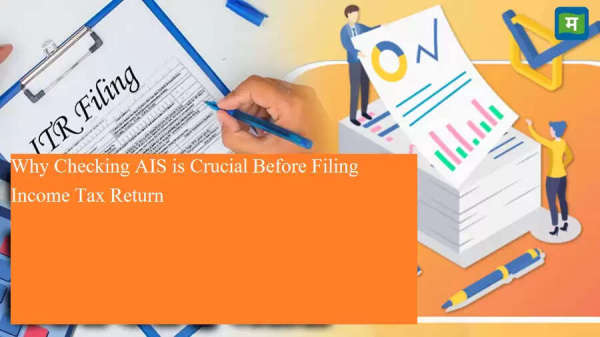
Many taxpayers confuse Form 26AS with AIS (Annual Information Statement), assuming both contain similar information. However, there are some key differences, and understanding them is essential for accurate and hassle-free Income Tax Return (ITR) filing.
Form 26AS is a consolidated tax statement issued by the Income Tax Department. It includes:
TDS (Tax Deducted at Source) and TCS (Tax Collected at Source) details
Advance tax or self-assessment tax paid by the taxpayer
Details of high-value transactions like large cash deposits, mutual fund purchases, etc.
Refunds issued by the department
While useful, Form 26AS offers a limited view of your total financial footprint.
The AIS provides a much broader and detailed picture. It includes everything from Form 26AS, plus:
Complete savings bank interest details
Dividend income from shares or mutual funds
Rent received, if any
Purchase and sale of securities or real estate
Foreign remittances, credit card bills above a threshold
GST data (for businesses)
So, while Form 26AS focuses on tax-related data, the AIS covers nearly all financial transactions linked to your PAN.
Avoid Mismatches
AIS helps verify whether all your income sources are properly reflected. If you skip reporting any item shown in AIS, it could lead to a mismatch and scrutiny by the tax department.
Ensure Full Disclosure
Some income like interest from savings accounts or dividends may not reflect in Form 26AS but will appear in AIS. Missing such income could be seen as tax evasion.
Prevent Tax Notices
The Income Tax Department compares your ITR with your AIS data. Discrepancies can lead to notices or demands. Reviewing AIS ensures your return matches their records.
Modify AIS if Required
If you find incorrect entries in your AIS, you can submit online feedback to get them corrected before filing the return.
Before filing your Income Tax Return, always:
Check both Form 26AS and AIS
Cross-verify income, investments, and high-value transactions
Report even small income like savings interest or mutual fund dividends
This step can save you from future complications, notices, and penalties.